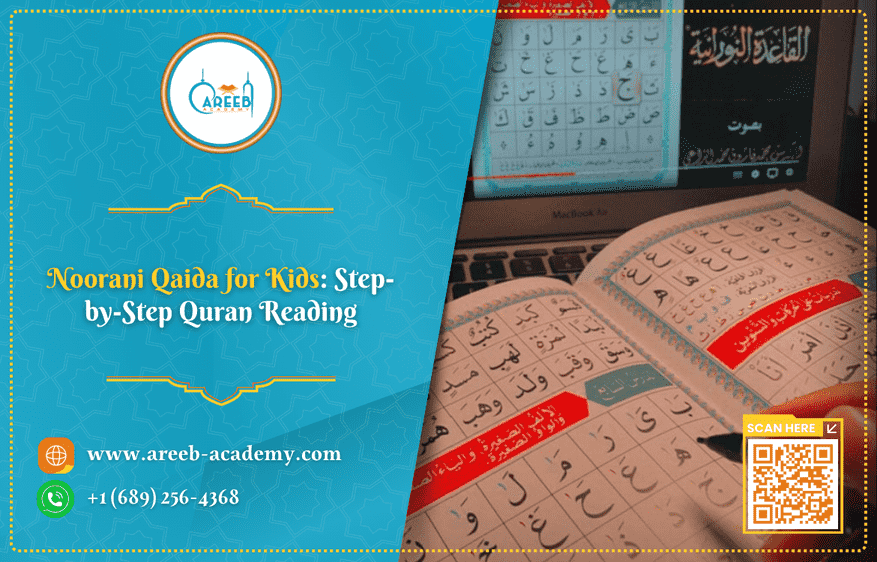
Noorani Qaida for Kids is the perfect starting point for children to learn how to read the Quran correctly. This foundational booklet introduces young learners to the Arabic alphabet, basic pronunciation, and essential Tajweed rules in a simple and engaging way. By following a step-by-step approach, kids develop strong reading skills, build confidence, and enjoy a fun, interactive learning experience that sets the stage for lifelong Quranic study.
What Is the Noorani Qaida?
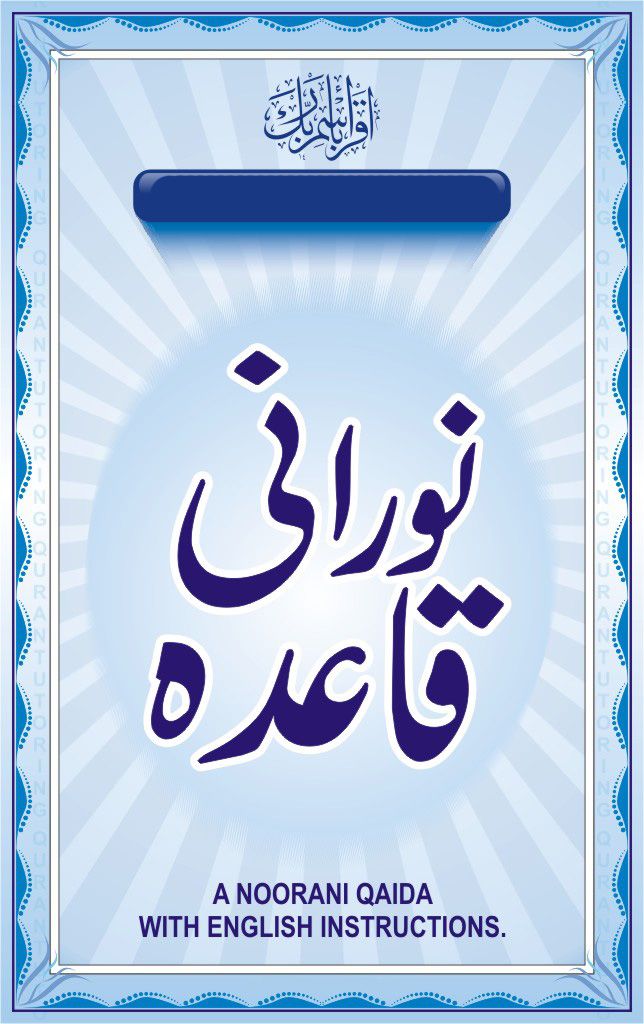
The Noorani Qaida for Kids is the foundational booklet most beginners start with when learning to read the Quran. It introduces the Arabic alphabet, explains how letters change shape in different positions, and teaches learners how to join letters to form proper words.
What makes the Qaida stand out is its structured, step-by-step method: children begin by recognizing letters, then move to simple words, and eventually read short Quranic verses with correct pronunciation.
Although it’s perfect for young learners, adults who are new to Arabic benefit from it just as much, which is why you’ll find it used globally—in homes, Islamic schools, and online academies.
The Origin and Purpose of the Qaida
The Noorani Qaida was compiled by Sheikh Noor Muhammad Haqqani in India, and it later became known worldwide as al-Qa’idah an-Nooraniyyah. His goal was simple: create an easy entry point for non-Arabic speakers so they can learn to read the Quran correctly, even if they are starting from zero.
Over time, this method became the standard beginner’s curriculum in madrasahs around the world because it builds strong reading habits and prepares learners for Tajweed and fluent recitation.
A well-known narration highlights the value of learning and reciting the Quran:
The Prophet ﷺ said that the person devoted to the Quran will be told on the Day of Judgement,
يُقَالُ يَعْنِي لِصَاحِبِ الْقُرْآنِ اقْرَأْ وَارْتَقِ وَرَتِّلْ كَمَا كُنْتَ تُرَتِّلُ فِي الدُّنْيَا فَإِنَّ مَنْزِلَتَكَ عِنْدَ آخِرِ آيَةٍ تَقْرَأُ بِهَا
“Recite and rise, for your rank will be at the last ayah you recite.” (at-Tirmidhi 2914)
This shows the spiritual importance of starting early with proper learning.
Key Teaching Principles
The Noorani Qaida for Kids brings together almost all the essential rules a child needs before moving into full Quran reading. Its teaching approach includes:
- Recognizing Arabic letters and their different shapes
- Understanding consonants and short vowels (fatḥah, ḍammah, kasrah)
- Practicing long vowels, tanween, and the rules of noon saakinah
- Learning ḥuroof leenah (soft letters)
- Mastering special rules like those of Raa and Laam
- Pausing and stopping correctly during recitation (waqf rules)
- Using tashdeed, tashdeed with sukoon, and tashdeed after madd
- Reciting basic Quranic words and phrases to build real reading fluency
The book gradually takes the learner from isolated letters to full Quranic sentences, making the transition smooth and confidence-boosting.
Why It’s Perfect for Beginners and Young Learners
Kids learn best when the material is simple, clear, and repetitive—and that’s exactly how the Noorani Qaida is structured. Lessons progress in small steps, each building on the last.
For young learners, this means:
- They don’t get overwhelmed
- They develop accurate pronunciation from the beginning
- They build confidence as they start reading actual Quranic verses early on
- Tajweed becomes easier later because the basics are already mastered
For parents and teachers, the Qaida offers a well-organized program that works for any child, regardless of their background or native language.
It’s truly the gateway to reading the Quran fluently and beautifully.
Why Learn Noorani Qaida?
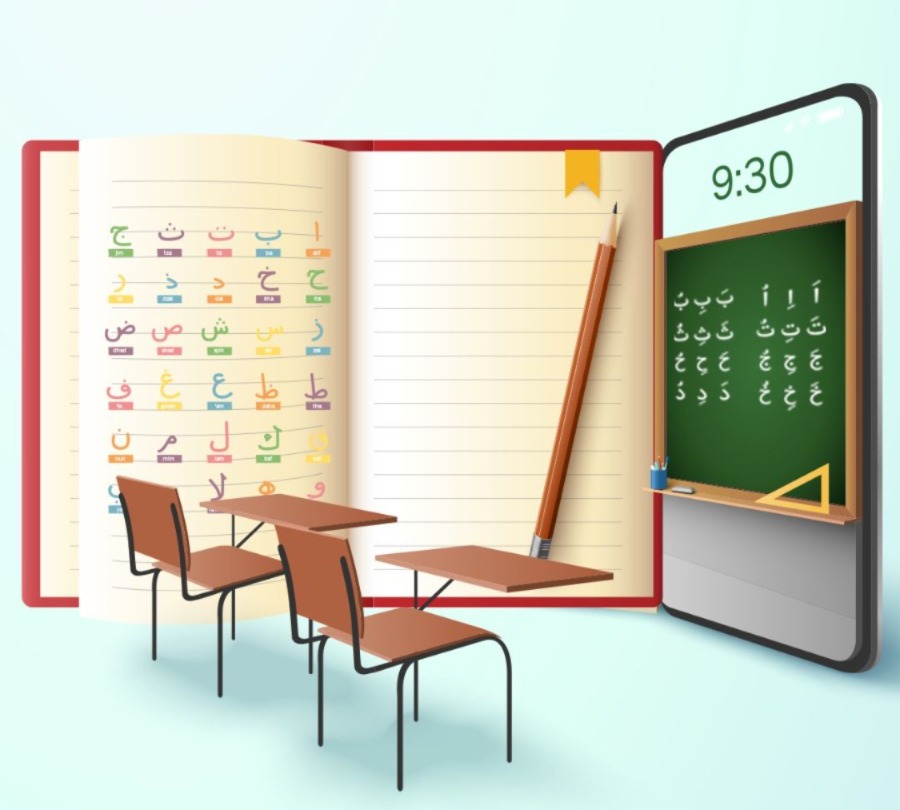
Learning the Noorani Qaida for Kids is the very first step toward reading the Quran correctly. Whether the learner is a young child or an adult starting from scratch, this booklet offers a clear structure that builds strong foundational skills.
For children, the Noorani Qaida introduces the Arabic alphabet in a way that’s simple, engaging, and developmentally friendly. It strengthens their ability to listen, recognize sounds, understand patterns, and eventually pronounce words properly. Kids start picking up Arabic naturally without feeling overwhelmed, and their reading and speaking skills grow quickly.
Check out our detailed blog post on Learning Quran to see practical tips for your child.
For adults, the Noorani Qaida makes the journey of Quran learning far more manageable. It focuses on correct pronunciation, helps learners recognize subtle sounds, and trains them in Tajweed step by step. Because it includes practical exercises using actual Quranic words and short verses, adults build confidence early on and avoid common pronunciation mistakes later.
Today, the Noorani Qaida is also widely taught online. Qualified teachers guide students through each lesson, from the basics all the way to fluent reading. This structured approach makes learning easy for people from different countries and time zones. Once someone completes the Noorani Qaida, reciting the Quran becomes smooth and obstacle-free, with clear and accurate pronunciation.
Noorani Qaida for Kids
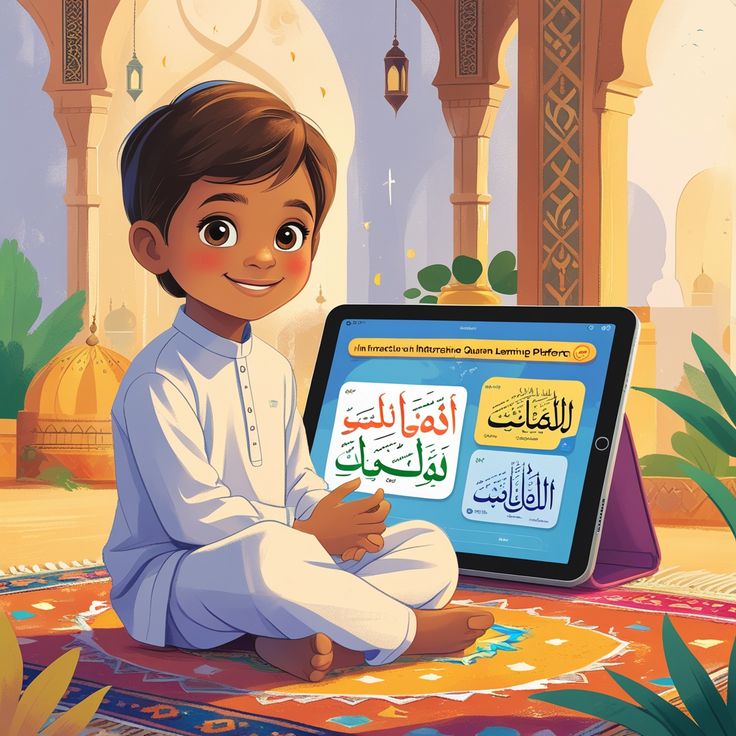
Children usually begin Noorani Qaida lessons before they open their first surah from the Quran. This early stage is more than just academic — it helps the child form a bond with the teacher. When a child feels comfortable, safe, and familiar with their teacher’s style, learning becomes easier and more joyful.
Kids who complete the Noorani Qaida tend to read the Quran more fluently than those who skip it. They learn the alphabet’s forms and sounds, understand how letters connect, and get plenty of practice with small words before moving to longer verses.
A few effective ways to teach Noorani Qaida to kids include:
- Starting with the basics: Introduce each Arabic letter and show its different shapes and sounds.
- Using visual aids: Flashcards, images, and charts make it easier for kids to connect letters with their sounds.
- Repetition: Repeating letters and words helps build strong memory.
- Songs and rhymes: Children learn faster when rhythm and melody are involved.
- Writing practice: Once they recognize letters, let them trace and write them.
- Introducing simple words: Gradually show how letters join together.
- Reading practice: Build confidence by letting them read small words first, then longer ones.
- Encouragement: Patience and praise go a long way in helping kids stay motivated.
Benefits of Noorani Qaida for Kids
Builds Correct Pronunciation (Makharij) Early
Kids learn how each Arabic sound is produced, helping them pronounce Quranic words accurately right from the start.
Develops Strong Tajweed Skills From the Start
Because the Qaida includes the foundational Tajweed rules, children grow up reading the Quran properly without having to correct old habits later.
Improves Reading Confidence and Fluency
By practicing small steps—letters, joined letters, then words—kids gain confidence and read smoothly when they move to full Quran recitation.
Makes Learning Fun and Structured
The lessons are short, organized, and easy to follow. When combined with visuals, games, or repetition techniques, Noorani Qaida becomes an enjoyable learning experience.
What Kids Learn in Noorani Qaida Step-by-Step
The Noorani Qaida gives children a clear, step-by-step path to begin their Quran-reading journey. It starts with the simplest skills—recognizing Arabic letters—and then gradually builds toward reading full Quranic sentences with proper Tajweed. Kids move from identifying individual sounds to mastering vowels, letter combinations, pronunciation rules, elongation, and pausing. By the time they complete the Qaida, they can read the Quran accurately, confidently, and with proper articulation.
- Arabic Alphabet Recognition
Children begin by learning each Arabic letter on its own: its name, its shape, and its basic sound. At this stage, using the Noorani Qaida for Kids helps them build strong visual and auditory recognition before moving on to more complex concepts.
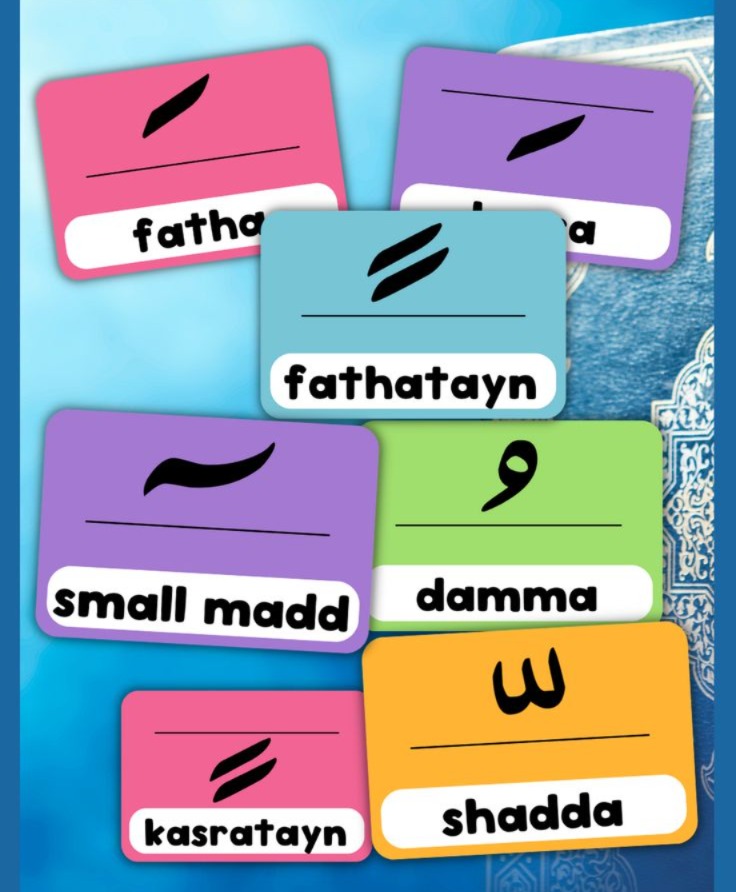
- Joining Letters and Word Formation
Next, they learn how letters change shape when joined together. Kids practice connecting letters into small syllables and simple words, which builds a solid foundation for real Quranic reading.
- Short Vowels (Harakat)
The lessons then introduce fatḥah, ḍammah, kasrah, and other basic vowel marks. Children learn how these harakat change the sound of a letter and how to read short, vowel-based words with ease.
- Sukoon, Shaddah, Madd, and Advanced Rules
At this stage, students explore more advanced reading rules:
- Sukoon for silent letters
- Shaddah for doubled sounds
- Madd for elongation
- Early Tajweed principles like noon sakin and meem sakin
These rules prepare them for fluent Quranic recitation.
- Reading Full Quranic Sentences
Once children master the basics, they gradually move on to reading complete words, phrases, and short verses from the Quran. By using the Noorani Qaida for Kids, they apply everything they’ve learned—letters, vowels, joining rules, and Tajweed. As a result, this approach builds their accuracy, fluency, and confidence, while reinforcing all the foundational skills they have acquired.
Tips for Teaching Noorani Qaida to Kids Effectively
Keep Lessons Short and Engaging

Children learn best in small, focused bursts. Instead of long study sessions, aim for 30–45 minute lessons full of movement, colors, and interaction.
Use playful methods like:
- Modeling mouth movements while pronouncing letters
- Simple Arabic rhymes based on Noorani Qaida sounds
- Fun challenges (e.g., “Can you read these 3 letters before the timer ends?”)
Any activity that feels like a game keeps kids engaged and eager to learn.
Use Repetition and Visual Aids
Repetition helps kids absorb new concepts, especially when learning letter shapes and sounds. Combine repetition with visual learning tools such as:
- Flashcards
- Illustrated alphabet charts
- Letter-shaped crafts
- Stickers and coloring pages
Arts and crafts are especially helpful—kids can create bookmarks, decorate Quran covers, or build a mini Kaaba as part of their learning routine. Incorporating the Noorani Qaida for Kids with these activities makes the rules stick and helps children remember faster.
Combine Reading with Listening Practice

Kids improve much faster when they hear correct pronunciation regularly.
Encourage:
- Listening to their own recordings
- Using apps with clear, correct recitations
- Following along with short clips from well-known Qaris
- Reading a word, then listening to how an expert pronounces it
Recording and playback is an excellent self-correction tool. Kids naturally start adjusting their sounds when they hear the difference.
Encourage Daily Mini-Practice at Home
Consistency is more powerful than long lessons. A few minutes of daily practice can transform a child’s fluency. Simple habits like:
- Revising yesterday’s letters
- Reading one line before bedtime
- Practicing makharij with a mirror
- Listening to a short Quran clip each evening
…can make a noticeable difference within weeks.
Parents can also create a small routine—morning practice, after-Asr review, or bedtime revision. The goal is gentle repetition, not pressure.
Common Challenges Kids Face (and How to Solve Them)
Difficulty Recognizing Similar Letters
Many children struggle to tell apart letters that look or sound similar—such as س / ص / ث or د / ذ / ظ. Using the Noorani Qaida for Kids makes this easier:
- Use color-coded flashcards for each letter group.
- Show them the exact makhraj (pronunciation point) with simple visuals.
- Practice with minimal pairs (e.g., sa–ṣa, da–ẓa) so they hear the difference.
- Let them watch their mouth in a mirror to match your movements.
Frequent short drills help the child build recognition naturally.
Mispronouncing Makharij
Makharij mistakes are very common—especially for throat letters like ع، ح، خ، غ or tongue-tip sounds like ت، د، ط.
To help your child improve:
- Model the mouth shape slowly and clearly.
- Use 3D mouth animations or illustrations to show sound origins.
- Encourage them to imitate while looking in a mirror.
- Let them listen to short clips from clear reciters, then repeat after them.
Small corrections early on prevent bad habits later.
Losing Focus or Motivation
Kids often lose interest if lessons feel long, repetitive, or difficult.
To keep them engaged:
- Keep lessons under 30–45 minutes.
- Turn practice into a game—timed challenges, letter hunts, or sticker rewards.
- Add crafts, rhymes, or movement-based activities.
- Celebrate small wins: “You mastered three new letters today—brilliant!”
A fun, relaxed atmosphere keeps their confidence high.
Moving Too Quickly Without Mastery
Some children rush through the lessons without solid understanding—and this shows up later when reading Quran.
To avoid this:
- Don’t move to the next page until the child reads the current one fluently and confidently.
- Review previous lessons briefly every day.
- Repeat similar drills (letters → syllables → words) before progressing.
- Ask them to explain or demonstrate a rule back to you.
Slow, steady learning always leads to stronger recitation.
Why Online Noorani Qaida Classes Work Best

One-on-One Attention From Expert Teachers
Online Noorani Qaida classes often provide private, one-on-one sessions, allowing tutors to focus entirely on each student. This personalized attention ensures that mistakes are corrected immediately, lessons are paced according to the learner’s abilities, and children get tailored guidance to build confidence and accuracy in Quranic reading.
Flexible Timings for Busy Families
With online classes, students can choose times that fit their schedules, whether mornings, evenings, or weekends. Learning from home saves commuting time and makes it easier for families to maintain a consistent study routine without disrupting other daily activities.
Interactive Learning Tools Increase Focus
Modern online platforms use tools like digital whiteboards, screen sharing, audio/video recitation, and interactive exercises to make lessons engaging. Additionally, color-coded Qaidas and visual aids help children understand Tajweed rules more effectively. As a result, they stay focused and motivated throughout the learning process, while enjoying a more interactive and fun learning experience.
Progress Tracking for Parents
Parents can monitor their child’s progress through regular updates and reports. This transparency allows them to see achievements, identify areas needing improvement, and support their child’s learning journey effectively.
Final Thoughts

Learning the Quran correctly starts with a strong foundation, and the Noorani Qaida for Kids is the ideal guide for beginners. With structured lessons, interactive techniques, and step-by-step guidance, children can master Arabic letters, pronunciation, and basic Tajweed confidently and enjoyably.
Give your child the best start in their Quranic journey with Areeb Academy. Our certified teachers, all native Arabic speakers, provide personalized lessons with flexible timings to suit every family’s schedule. Experience how easy and fun learning Quran can be
✨Book a free trial class today!
FAQs
Q1: What age is suitable for Noorani Qaida lessons?
A: Children as young as 4 years old can begin learning, though older beginners can benefit too. Lessons are tailored to each child’s pace.
Q2: Can adults learn Noorani Qaida too?
A: Absolutely! Noorani Qaida is suitable for beginners of all ages who want to improve Quranic reading and Tajweed.
Q3: Are online classes effective for kids?
A: Yes! Online classes offer one-on-one attention, interactive tools, and flexible timings, making learning both convenient and engaging.
Q4: Who teaches the classes at Areeb Academy?
A: Our classes are taught by certified native Arabic-speaking teachers with years of experience in teaching Noorani Qaida and Tajweed.
Q5: Can I try a class before enrolling?
A: Yes! Areeb Academy offers a free trial class so you can experience our teaching methods before committing.


